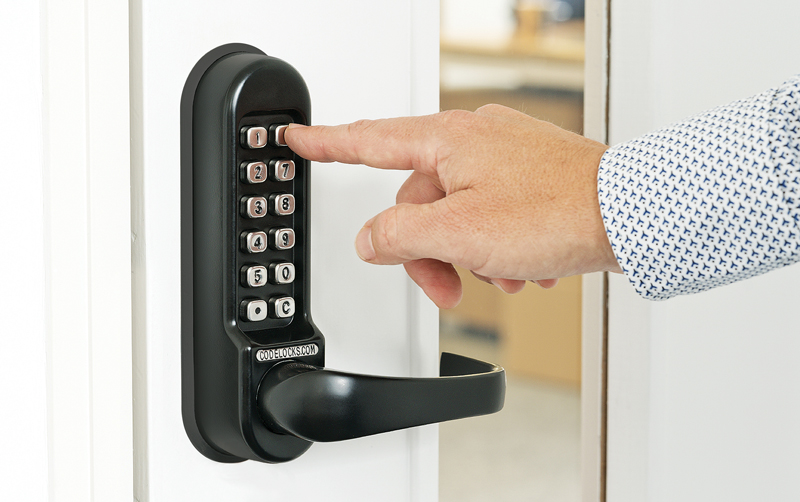 With the recent increase in flexible working, facilities managers are seeing lower occupancy levels in properties across the country. Colin Campbell, Managing Director of Codelocks, talks about what this means for security – and how access control technology can help facilities managers at this time.
With the recent increase in flexible working, facilities managers are seeing lower occupancy levels in properties across the country. Colin Campbell, Managing Director of Codelocks, talks about what this means for security – and how access control technology can help facilities managers at this time.
Facilities managers have always needed to prepare for the unexpected, but recent changes to our daily lives have made it even harder to judge levels of risk to property. With many people now working from home on a daily basis, properties are standing empty, or only lightly occupied, for long periods. Appropriate access control is needed to help prevent break-ins, theft and damage.
Smart locks: the key to flexible working
With staff working from home, or in separate shifts, providing access to the right areas of premises at the right time is beneficial to both building managers and employees. One very effective way to achieve this is through the use of smart locks. Smart locks combine the convenience of keyless operation with the extra control and functionality afforded by smart technology.
Using wireless technology and an Application Programming Interface (API), you can create codes that have a specified start date, time and duration that will automatically expire. Facilities managers and business owners can provide the required levels of access for essential workers and important deliveries without compromising on security, even while facilities managers are located remotely. By automating code generation, the need for onsite staff is dramatically reduced and, in many cases, removed.
Securing equipment outside
According to Logic Fire and Security, the UK construction industry loses £800 million each year due to burglary, vandalism and neglect. Research undertaken by the Chartered Institute of Building revealed that 92% of construction workers and management are affected weekly, monthly or yearly by theft.
This is even more the case when there are fewer people around to act as a natural deterrent to crime, and many properties are less guarded now than usual. The exposure of construction sites and outbuildings leaves them especially vulnerable, meaning that access control is paramount. One way that construction companies can secure their sites is by investing in mechanical coded locks.
These are heavy duty locks suitable for securing enclosures containing construction equipment, robust enough for frequent use, flexible enough to allow multiple workers easy access and effective at keeping the public safely out of the way of any construction hazards. They are cost-effective and can be installed easily on to existing doors, gates and storage units.
For environments that are at particular risk from damage caused by corrosion, a marine grade finish lock could be installed. These are designed to withstand exposure to moisture, and are ideal for outbuildings, construction sites, marinas and properties by the water.
Secure lockers for a flexible workforce
Another consequence of the increase in homeworking and business properties becoming more sparsely occupied is a shift towards hot-desking. But sharing facilities needn’t stop at desks. Safe storage of kit, equipment and devices is essential for many workers, but due to space restrictions, lockers are often in high demand and over-subscribed.
A simple solution to this is to equip lockers with coded locks. This enables multiple users to access the same locker securely, without the need for a key. There are many options available. A simple mechanical locker lock can be programmed by the user each time and be ready for the next person once it is finished with. More sophisticated electronic locker locks can be programmed by an app, allowing access to authorised users at set times.
With either option, coded locks can cut down on the number of lockers needed to meet demand. Plus, as each user has their own code, rather than a copy of a key, which is at risk of being misplaced. Providing coded access to lockers also avoids facilities managers and caretakers needing to spend budget and time repairing locks – keeping maintenance costs to a minimum.
Locks for the future
With flexibility becoming more important in the workplace, coded locks look set to become more prevalent, providing convenient access control for a range of sites, buildings, and equipment. If you are looking to upgrade the access control at your office, construction site, shop, school or warehouse, there are an ever-growing range of access control solutions to choose from.

